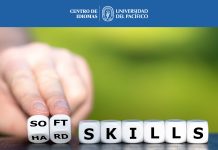What does theory say?
What is your experience of eating at fast food restaurants such as the ubiquitous McDonald’s? Does it differ from restaurant to restaurant? Does it change depending on the time of day? Fast food restaurants are designed to offer exactly the same customer experience, regardless of any other circumstances. Be it Lima, Beijing, London, New York… everything is the same.
Sociologist George Ritzer, in his book The McDonaldization of Society (1993), warns that society is beginning to show a tendency to becoming “McDonaldized”, which means that many aspects of life are beginning to reflect the principles underpinning the operation of fast food restaurants. Ritzer points four principles: efficiency, calculability, predictability and control. You might wonder what this much has to do with English Language Teaching. A great deal.
How does McDonaldization become evident in ELT?
There has been some research in the field in the last few years (see Littlejohn 2012, Shamsabadi and Ketabi 2014) pointing, for example, at coursebooks. Let us try a small exercise in reflection: look at any two coursebooks you have used in your school/language school. They will probably offer a similar sequence of elements to be taught, perhaps starting with the verb to be, then moving on to the present simple, past simple, and so on (if we only look at grammar). The sequence is predictable and, although well-meant, can we say in all certainty that it is the most effective sequence in which such elements need to be taught? What is the empirical evidence for this? Does it consider the uniqueness of a language classroom and of each and every language learner?
One more aspect we could consider is that of methodology. Frequently, we are told to teach in a certain way, following a certain approach with a number of very specific procedures. This could only remind us of fast food: every employee has to carry out their duties in only one way, without any possibility of adapting it to their context. Many workers are not trained enough and so they continue doing the same task for ever, in exactly the same manner. In ELT, these practices are guidelines which cater for those practitioners with little experience; the risk lies in adhering to these guidelines believing them to be the most effective way of fostering learning. Again, we fail to remember the uniqueness of every teaching situation.
McDonaldization is, unfortunately, spreading in education and ELT is no exception. However, it is teachers themselves who have the giant task and duty to halt and possibly reverse this trend. Not by “becoming radical” and stopping the use of coursebooks, or denouncing the existence of teaching guidelines as if it were a crime, but by reflecting on our everyday activities, our students’ needs and, most importantly, the human dimension of teaching.
What do YOU think? Has this become the trend in our country? If so, in which ways?
References:
A brief overview of McDonaldization: http://www.mcdonaldization.com/whatisit.shtml
Shamsabadi, R. and Ketabi, S. (2014). McDonaldization in Iranian coursebooks: Absence or presence? Retrieved from http://elt.tabrizu.ac.ir/article_3322_373.html
Littlejohn, A. (2012). Language Teaching Materials and the (Very) Big Picture. Retrieved from http://www.andrewlittlejohn.net/website/docs/Littlejohn%20Language%20Teaching%20Materials%20and%20the%20(Very)%20Big%20Picture.pdf
Estimated reading time: 2 minutes, 44 seconds











Thanks for being the first visitor ever to comment on our blog! Let's see… It is true that technology has played a crucial role here. We're all aware that it has brought enourmous benefits to education; the problem lies in the fact that sometimes teaching becomes the result of "copy and paste" thinking that doesn't consider local cultural factors and the character of a country. That's where we see the results: same lessons, same content, same methodology, different students? There is clearly something that doesn't match. What to do, then? Here is where WE are the agents for change: contrasting, localizing, adapting, … all these techniques are at our disposal at a micro level (lessons, materials) and also at a macro level (curriculum and syllabus design). It is a huge task! I really hope that one day everyone involved in education will realise that "local" is the way to go, but with a "global" focus. Why not? Thanks again for commenting!
Este comentario ha sido eliminado por el autor.
Comments are closed.